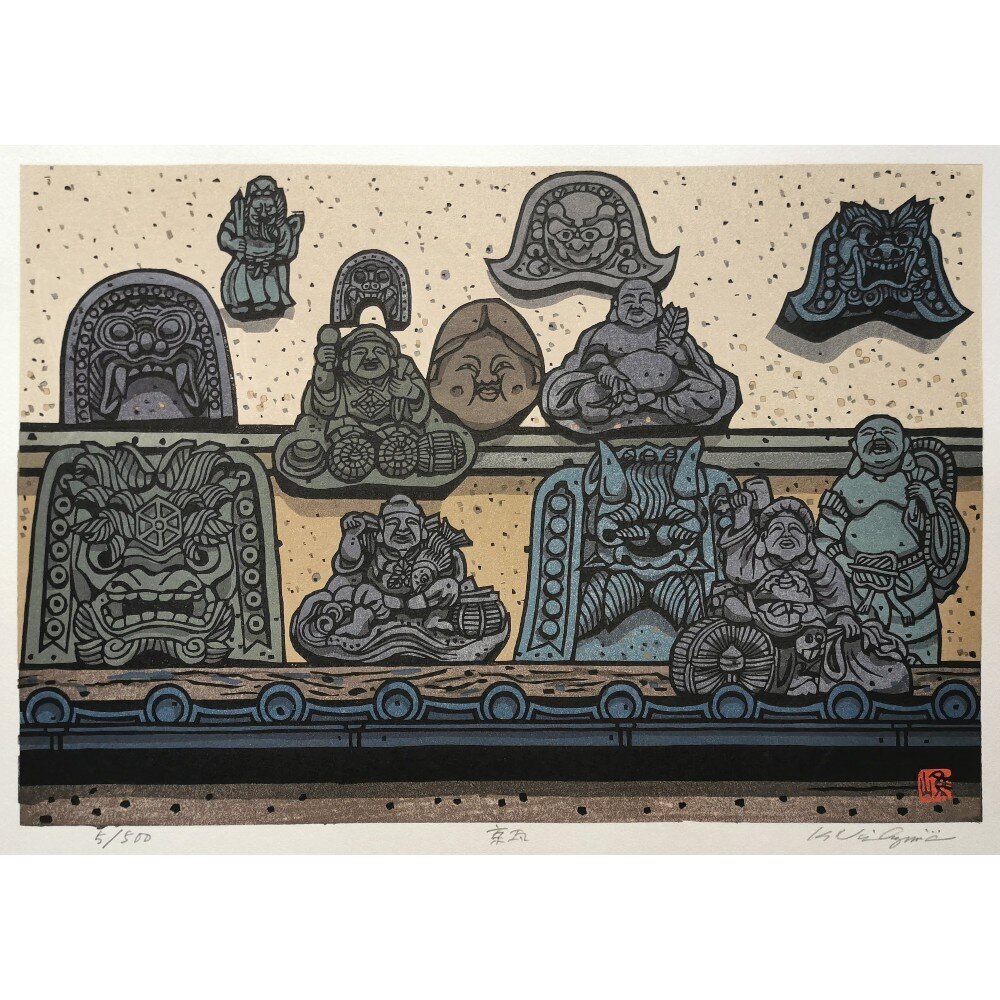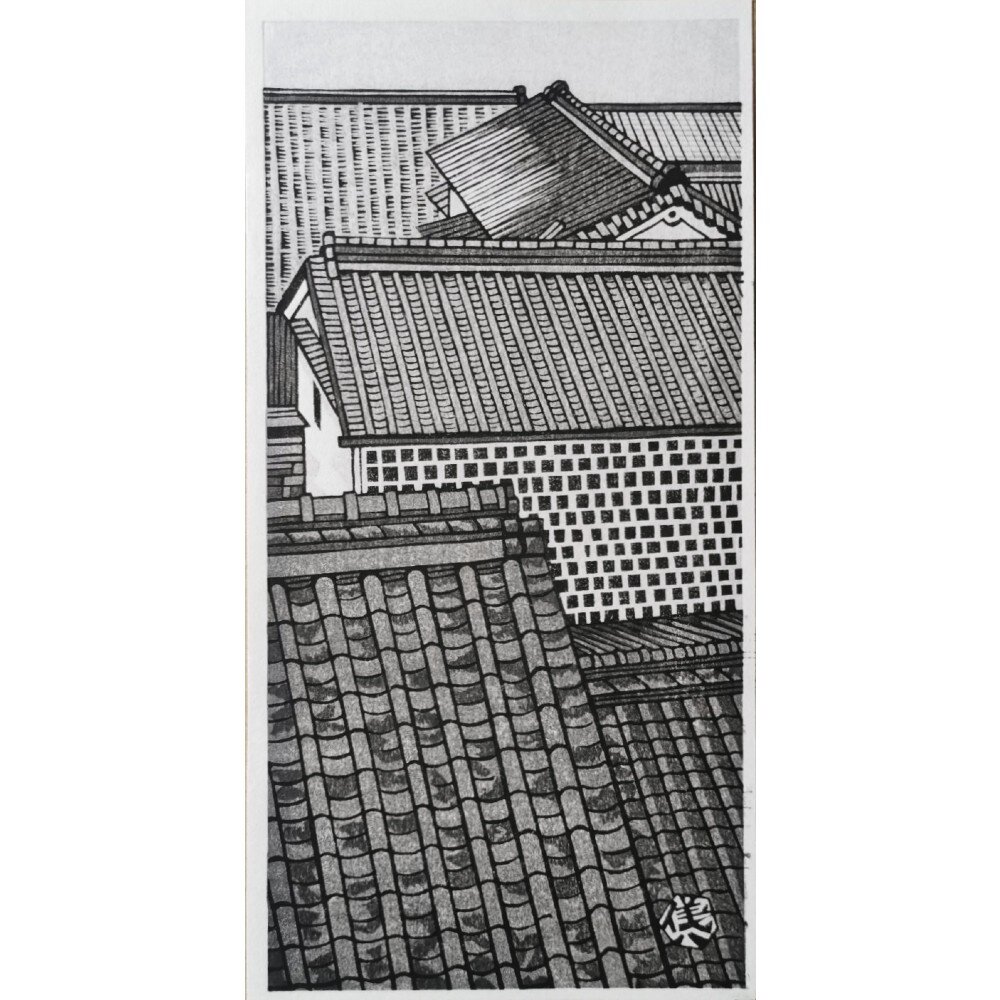Japanese Prints #005: Kyoto’s Onigawara (鬼瓦) - 京瓦 "Kyogawara"
One of the most iconic images of Japan, & often subject to many 20th Century Japanese print artists, are the scenes of traditionally tiled townhouses (machiya), castle, & temple rooftops. The clay fired roof tiles (“kawara”) are always typically found dressed alongside Onigawara (鬼瓦) - Oni-headed figureheads rooted in Japanese folklore, & placed along eaves to ward against evil.
Katsuyuki Nishijima’s piece titled 京瓦 "Kyogawara" - the traditional roof tiles & Onigawara specific to Kyoto - presents a collection of Kyoto’s Onigawara:
Shōki 鍾馗 (Zhong Kui): A talisman of Kyoto’s roof-scape - famed and loved in the city more than anywhere else in Japan.
Otafuku お多福: The smiling, round-face woman.
Daikoku 大黒天 & Ebisu 恵比寿: Two of the Seven Gods of Fortune (“Shichi-fuku-jin” (七福神), and often depicted together as a pair. Daikoku 大黒天: Carrying his large sack of treasure, a small magical mallet, and often sitting upon a bag of rice, Daikoku brings fortune to the land, agriculture, & wealth. Ebisu 恵比寿: The God of fishermen & fortune, carries a large fish in one hand, a fishing rod the other.
Demon/Goblin Onigawara masks: Two horned demon masks & faces. Likely designs rooted to Kyoto’s original/ancient Heian Onigawara artefacts - such as the large goblin Oni on display at Todaiji Temple, Nara, & those excavated from the ruins of Heian Palace Toyorakuden, Kyoto.
Hotei 布袋: Another of the Seven Gods of Fortune (“Shichi-fuku-jin” (七福神). The laughing, large bellied Buddha whom carries his large sack of fortunes and ceremonial fan; Hotei is the God of happiness, patron of bartenders, & protector of children.
Kyogawara with one of the last active craftsmen: Akihisa Asada - a Kyoto tile master at Asada Tile Factory. https://www.kyogawara.com/




